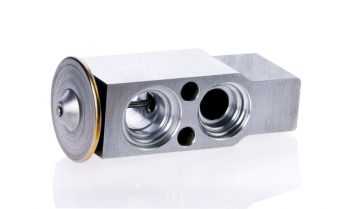
Whether your clothes are not drying properly, or your gas dryer is not heating up at all, there’s a high chance that the problem lies with the igniter. Replacing the igniter on a gas dryer is a task that seems complicated, but with the right tools and a little patience, it can be done at home, saving you time and money on a service call. In this comprehensive guide, we will walk you through the process of replacing an igniter on a gas dryer.
To replace an igniter on a gas dryer, first, unplug the dryer and shut off the gas. Remove the lint screen and housing screws, and release the top panel. Disconnect the door switch wires and locate the igniter. Remove the mounting screw and disconnect the igniter wire harness. Carefully pull out the old igniter, and position the new one in place. Secure it with the mounting screw and reconnect the wire harness. Finally, reassemble the dryer and restore power and gas. Test the new igniter to ensure it’s functioning correctly.
Recognizing the Signs of a Faulty Igniter
Before you start the replacement process, it’s essential to identify the signs that indicate a faulty igniter. These include:
- Dryer not heating: If your dryer isn’t heating or taking too long to dry, it could signal a malfunctioning igniter.
- No glow or spark: After starting the dryer, observe the burner assembly. If the igniter doesn’t glow or spark shortly after starting, it may need to be replaced.
- Burned out or cracked filament: Inspect the igniter’s filament for signs of singeing or cracking. Any visible damage indicates that the igniter needs to be replaced.
- No continuity: Use a multimeter to perform a continuity test on the igniter. If there’s no continuity, the igniter is burned out and needs to be replaced.
Preparing for the Replacement Process
Replacing an igniter on a gas dryer is a task that can be done by a novice person, but it does require some basic knowledge and the right tools. The tools you will need include a Phillips screwdriver, a putty knife, and a 5/16-inch shallow socket and ratchet.
Before beginning the process, it is crucial to take some safety precautions for a safe and successful igniter replacement. Always unplug the dryer and shut off the gas supply before starting. It’s also recommended to wear work gloves to protect your hands and handle the igniter carefully as it is a delicate component and can break easily.
Steps to Replace an Igniter on a Gas Dryer
Once you have the necessary tools and have taken the appropriate safety precautions, follow these steps to replace the igniter:
- Unplug the dryer and shut off the gas: This is the first and most crucial safety step.
- Remove the lint screen: Pull the lint screen out of the housing in the top panel of the dryer.
- Remove lint screen housing screws: Use a Phillips screwdriver to remove the two screws that secure the lint screen housing to the top panel.
- Release the top panel: Push a putty knife under the lid near the left and right edges of the front of the dryer. This action will release the spring clips holding the top panel in place. Rotate the top panel up and out of the way.
- Disconnect the door switch wires: Carefully disconnect the door switch wires and remove the top front panel screws. Lift the panel up and out.
- Locate the igniter: The igniter is typically located on the side of the gas burner funnel.
- Remove the mounting screw: Use a 5/16-inch shallow socket and ratchet to remove the mounting screw from the igniter.
- Disconnect the igniter wire harness: Release the igniter wire harness plug locking tab and remove the wire harness from the igniter.
- Remove the old igniter: Carefully pull the old igniter out of the dryer and set it aside for disposal.
- Install the new igniter: Position the new igniter in place and secure it with the mounting screw. Reconnect the igniter wire harness.
- Reassemble the dryer: Reattach the front panel, door switch wires, and top panel. Secure the lint screen housing with the screws and insert the lint screen back into its housing.
- Restore power and gas: Plug the dryer back in and turn on the gas supply.
For a visual guide, you can refer to this video on How to Replace a Whirlpool Gas Dryer Igniter. Make sure to follow the instructions specific to your dryer model, as the process may vary slightly depending on the brand and design.
Testing the New Igniter
After installing the new igniter, it’s important to test it to ensure it’s functioning correctly. To do this, turn off the power to the appliance before testing, remove any covers or shields that may be obstructing your view of the igniter, turn on the appliance, and observe whether the igniter is glowing. If it’s glowing but the burner has not been lit after 90 seconds, the igniter has weakened and is unable to draw the proper amps to open the safety valve and light the burner. In this case, the igniter should be replaced.
If the igniter is not glowing, test the part for continuity using a multimeter. A continuity test will determine if a continuous electrical path is present in the igniter. If there’s no continuity, the igniter should be replaced.
Potential Problems and Solutions
During the replacement process, you might encounter a few problems. These can include a fragile igniter, incorrect positioning, loose or damaged connections, a faulty new igniter, or the igniter not receiving power. Each of these issues can be resolved by handling the igniter with care, installing it properly, repairing or replacing any damaged parts, replacing a faulty igniter, and ensuring the igniter is receiving the correct voltage.
Conclusion
Replacing an igniter on a gas dryer is a doable task at home that can save you on service costs. It requires some basic knowledge, the right tools, and a bit of patience. The process involves recognizing the signs of a faulty igniter, preparing for the replacement process, replacing the igniter, testing the new igniter, and troubleshooting any potential problems.
Remember, safety should always be your priority when performing such tasks. Always disconnect the power source from your dryer before attempting any repairs. If you’re not confident in your ability to perform the replacement, consult a professional technician.
Frequently Asked Questions
How long does it typically take to replace an igniter on a gas dryer?
The time it takes to replace an igniter on a gas dryer can vary depending on your experience and familiarity with the appliance. However, for a novice, it typically takes about 1 to 2 hours to complete the task.
Can I use any type of igniter for my gas dryer?
No, it’s essential to use an igniter that’s compatible with your specific model of gas dryer. The igniter should match the specifications of the original igniter in your appliance. Always check the model number of your dryer and consult the manufacturer’s guide to ensure you’re purchasing the correct part.
What are the risks if I continue to use my gas dryer with a faulty igniter?
Using a gas dryer with a faulty igniter can result in inefficient operation, such as clothes not drying properly or the dryer taking too long to dry. In some cases, it could also lead to a gas leak, which is a serious safety hazard. Therefore, it’s highly recommended to replace a faulty igniter as soon as possible.
Can a faulty igniter cause a fire?
A faulty igniter itself is not likely to cause a fire. However, if it leads to a gas leak, and the leaked gas comes into contact with a heat source or spark, it could potentially cause a fire. It’s always best to maintain your appliances in good working order to prevent such risks.
Do I need to hire a professional to replace the igniter on my gas dryer?
While it’s possible to replace the igniter on a gas dryer yourself, as detailed in this guide, it’s important to consider your comfort level and experience with such tasks. If you’re not confident in your ability to safely and correctly perform the replacement, it’s recommended to hire a professional technician.












